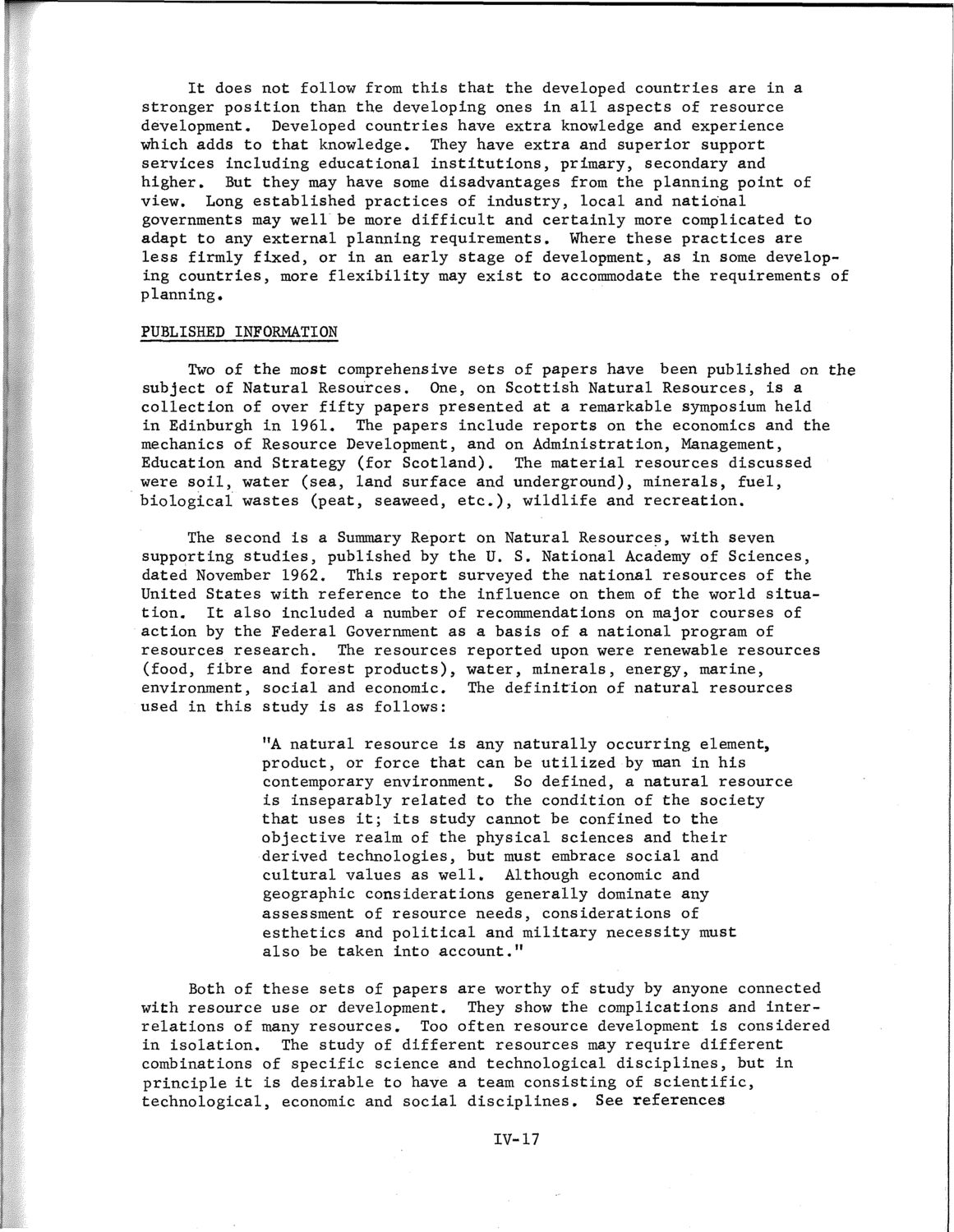| |
| |
Caption: SWE - Proceedings of the First International Conference of Women Engineers and Scientists
This is a reduced-resolution page image for fast online browsing.

EXTRACTED TEXT FROM PAGE:
It does not follow from this that the developed countries are in a stronger position than the developing ones in all aspects of resource development. Developed countries have extra knowledge and experience which adds to that knowledge. They have extra and superior support services including educational institutions, primary, secondary and higher. But they may have some disadvantages from the planning point of view. Long established practices of industry, local and national governments may well be more difficult and certainly more complicated to adapt to any external planning requirements. Where these practices are less firmly fixed, or in an early stage of development, as in some developing countries, more flexibility may exist to accommodate the requirements of planning. PUBLISHED INFORMATION Two of the most comprehensive sets of papers have been published on the subject of Natural Resources. One, on Scottish Natural Resources, is a collection of over fifty papers presented at a remarkable symposium held in Edinburgh in 1961. The papers include reports on the economics and the mechanics of Resource Development, and on Administration, Management, Education and Strategy (for Scotland). The material resources discussed were soil, water (sea, land surface and underground), minerals, fuel, biological wastes (peat, seaweed, etc.), wildlife and recreation. The second is a Summary Report on Natural Resources, with seven supporting studies, published by the U. S. National Academy of Sciences, dated November 1962. This report surveyed the national resources of the United States with reference to the influence on them of the world situation. It also included a number of recommendations on major courses of action by the Federal Government as a basis of a national program of resources research. The resources reported upon were renewable resources (food, fibre and forest products), water, minerals, energy, marine, environment, social and economic. The definition of natural resources used in this study is as follows: "A natural resource is any naturally occurring element, product, or force that can be utilized by man in his contemporary environment. So defined, a natural resource is inseparably related to the condition of the society that uses it; its study cannot be confined to the objective realm of the physical sciences and their derived technologies, but must embrace social and cultural values as well. Although economic and geographic considerations generally dominate any assessment of resource needs, considerations of esthetics and political and military necessity must also be taken into account." Both of these sets of papers are worthy of study by anyone connected with resource use or development. They show the complications and interrelations of many resources. Too often resource development is considered in isolation. The study of different resources may require different combinations of specific science and technological disciplines, but in principle it is desirable to have a team consisting of scientific, technological, economic and social disciplines. See references IV-17
| |